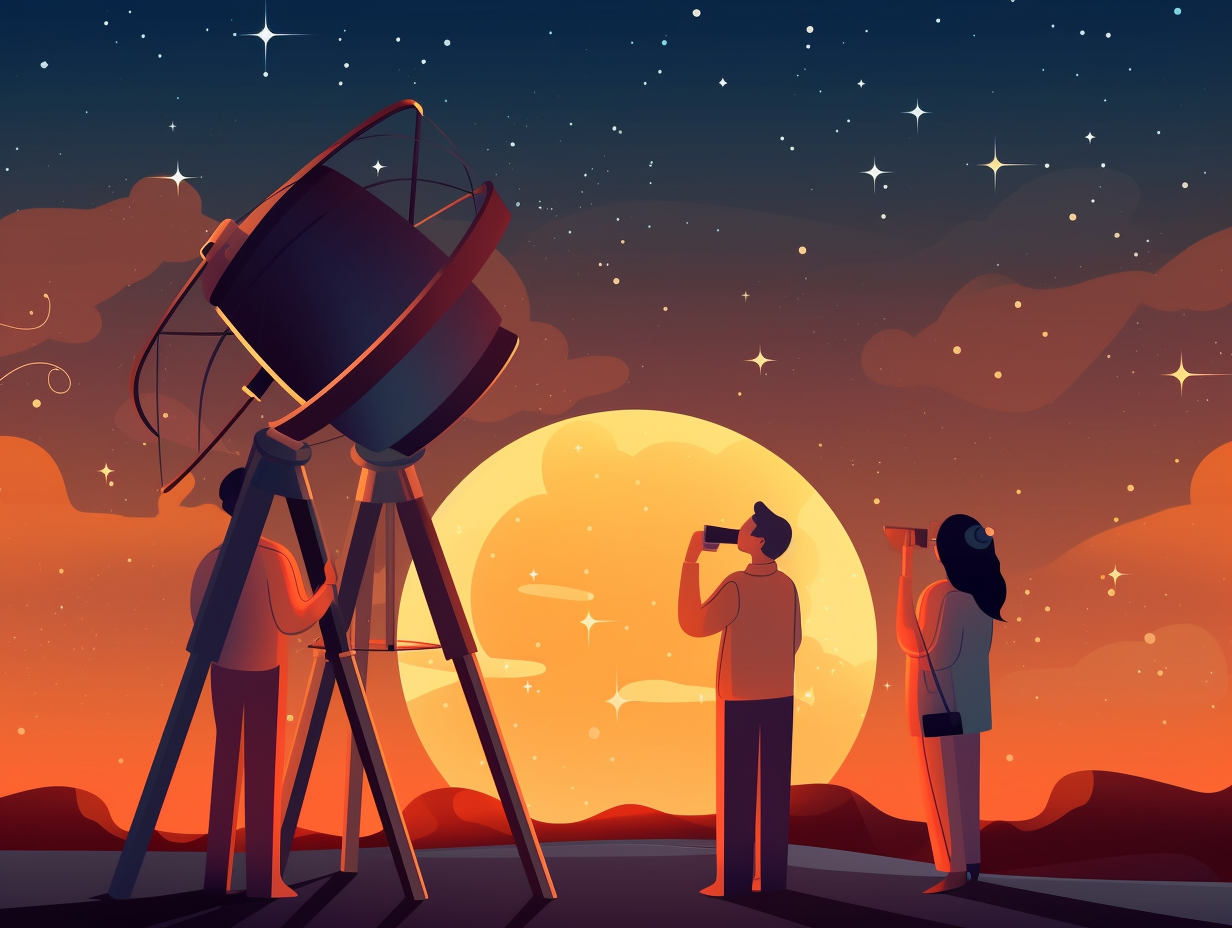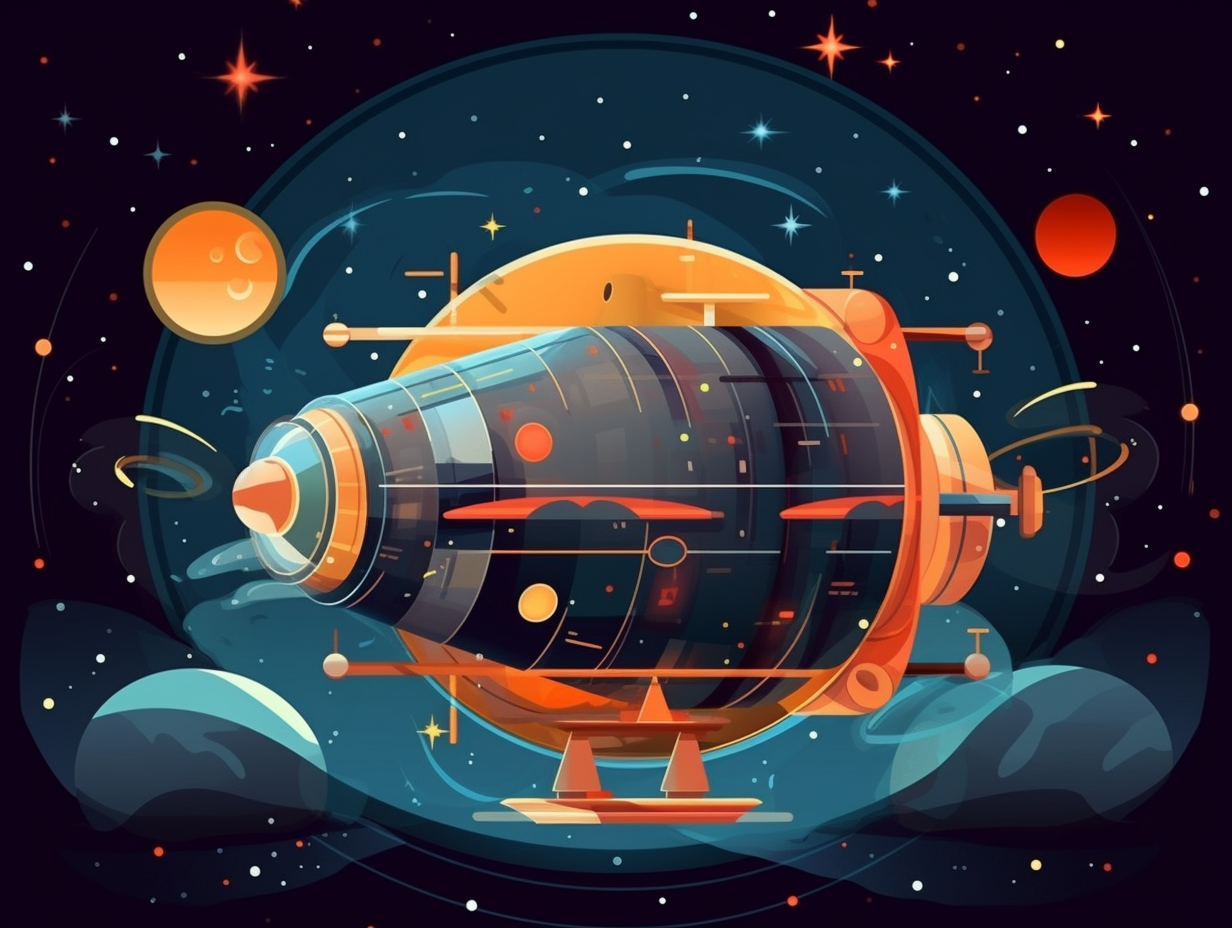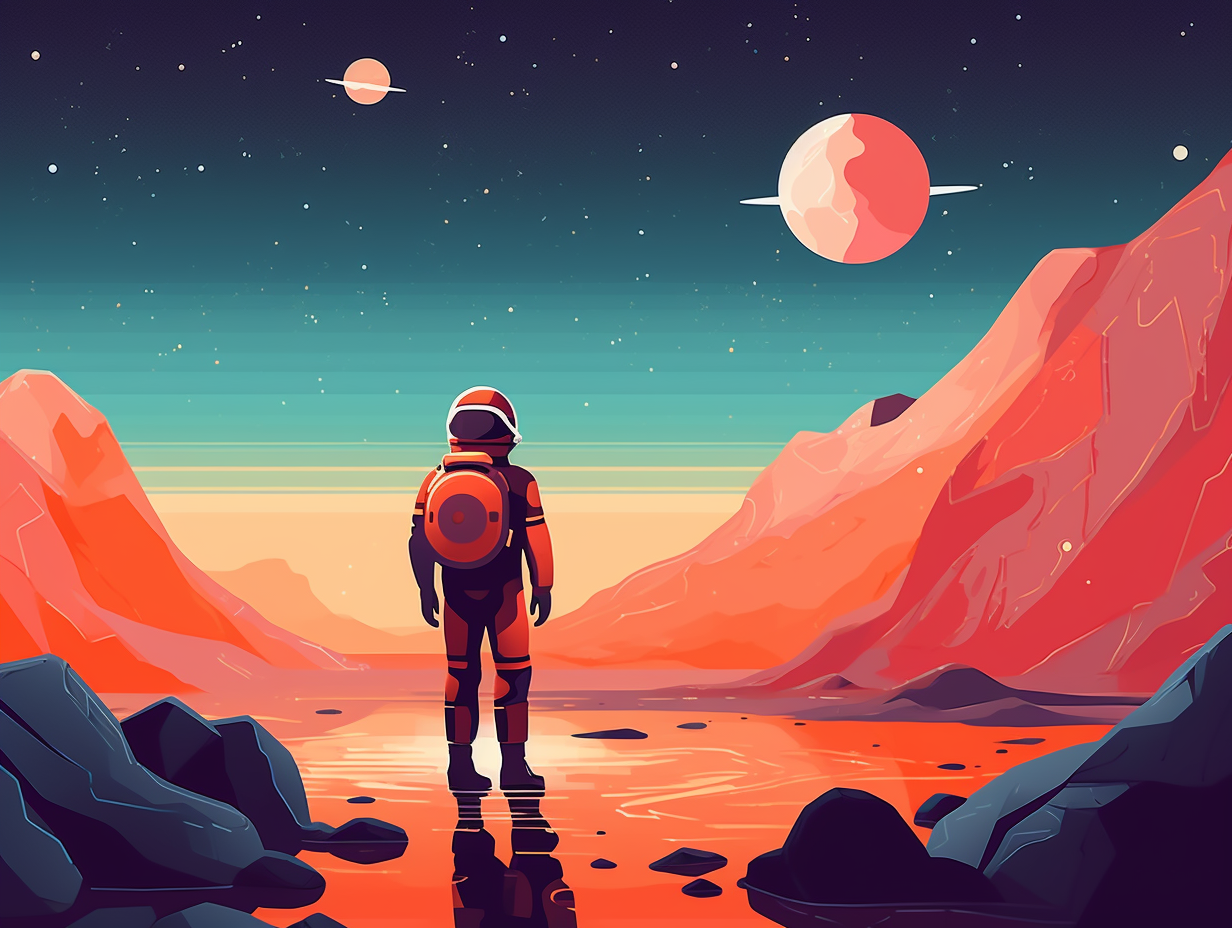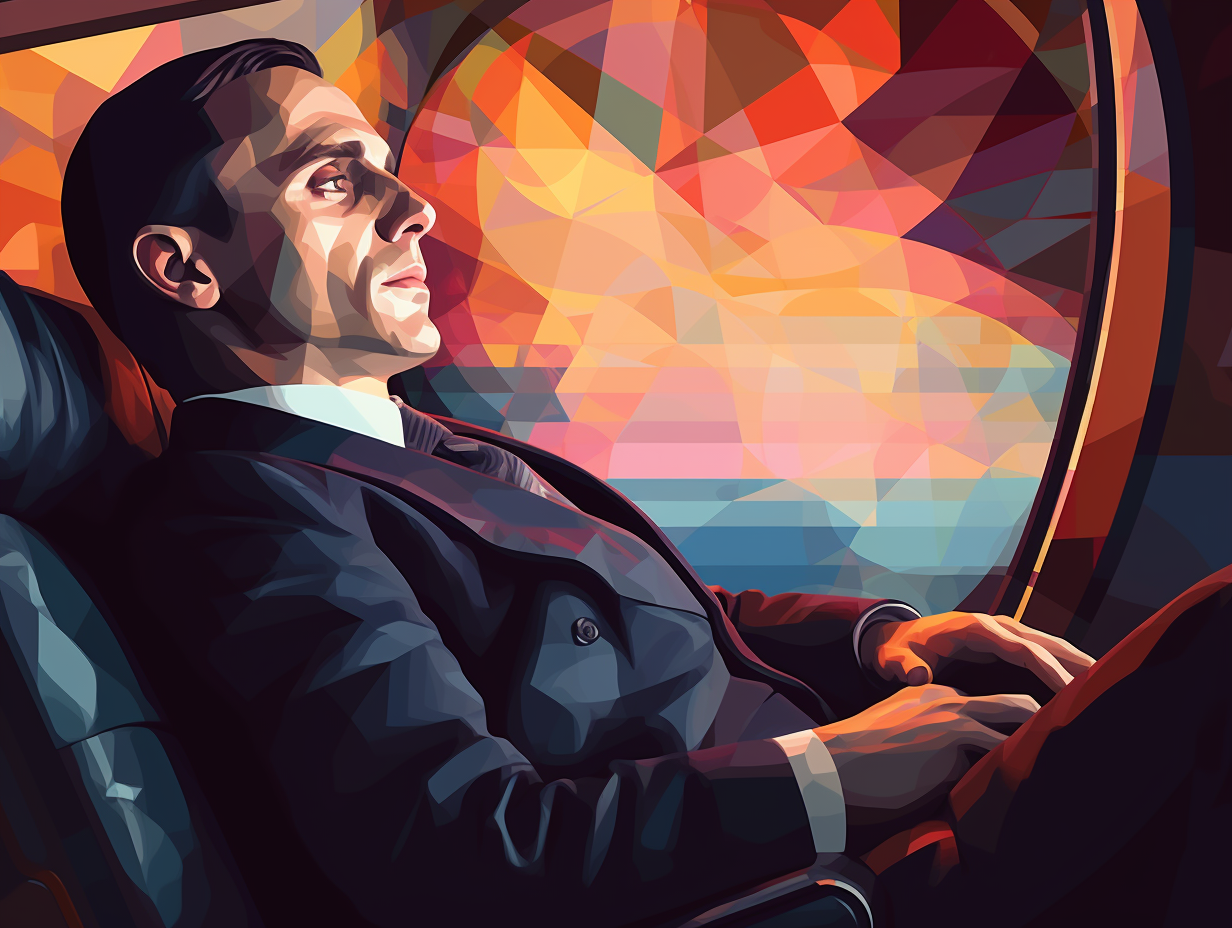Discover the Stars: Top 11 Amazing Fun Facts about the Hubble Telescope

1. Hubble: The Nosy Neighbor
If the Hubble Telescope were a nosy neighbor, it'd see the ants in your backyard building tiny sandcastles: Hubble can capture details as small as a grain of sand from objects millions of miles away, with an accuracy akin to shining a laser beam on a dime from 200 miles away.
Source => phys.org
2. Vampire Hubble's Fancy Blinds
Imagine the Hubble Telescope as a sun-fearing vampire with fancy window dressings: its solar arrays were designed as flexible roller blinds, retractable and able to fit between its round hull and the Shuttle cargo bay, while withstanding 30,000 thermal cycles over five years and being made from oxygen-safe materials.
Source => esa.int

Did you know Galileo's first telescope observation in 1610 led to the discovery of Jupiter's four largest moons and changed our understanding of the solar system? 🌌🔭 You'll be over the moon with more fun facts!
=> Fun Facts about Telescopes
3. Hubble's Frequent Flier Status
If the Hubble Space Telescope could earn frequent flier miles, it would be on a first-name basis with the entire flight crew, scoring unlimited first-class upgrades – and most likely the occasional pilot's hat: Since its launch in 1990, Hubble has completed over 142,000 trips around Earth, totaling more than 3.5 billion miles, and astronomers have published nearly 14,000 scientific papers using the groundbreaking data collected during its 26-year journey through the cosmos.
Source => hubblesite.org
4. Hubble's Space Cardigan
Ever wondered if the Hubble Telescope needed a sleek, stainless-steel space cardigan to stay warm out there in the cosmic abyss? Turns out it does: Astronauts equipped Hubble with a custom-designed New Outer Blanket Layer (NOBL) that shields its delicate equipment from temperature fluctuations and charged particles, ensuring it remains as functional as it is fashionable for at least a decade.
Source => esahubble.org

5. Hubble's Corrective Eye Surgery
Houston, we have a solution: In 1993, astronauts installed the corrective optics space telescope axial replacement (COSTAR) during the first Hubble servicing mission to fix the primary mirror's spherical aberration, allowing the Hubble Telescope to redirect corrected light to other instruments and capture stunning images of the universe.
Source => airandspace.si.edu
6. Hubble's "You Had One Job!" Moment
In a classic case of "you had one job!": The Hubble Space Telescope's primary mirror ended up with a spherical aberration due to a misaligned lens in a test instrument called the 'reflective null corrector', despite a cruder instrument trying to warn the manufacturer about the error. This hiccup hasn't stopped Hubble from snapping cosmically stunning images for the past 30 years, making us wonder if there's a cosmic sitcom in the making.
Source => newscientist.com
7. Detective Hubble Holmes
Who needs a detective when you've got Hubble Holmes on the case? This cosmic sleuth has a knack for uncovering celestial hints like it's nobody's business: The Hubble Space Telescope made a crucial breakthrough by detecting water vapor in the atmosphere of a mini-Neptune called K2-18b, situated 110 light-years away, suggesting that exoplanets outside our solar system may indeed hold the key to supporting liquid water, if they keep a comfortable distance from their stars.
Source => hubblesite.org
8. Hubble's Gravitational X-Ray Vision
Ever wondered if Superman's X-ray vision had a cosmic cousin? Well, let me introduce you to the Hubble Telescope's superpower: using gravitational lensing, this space-age hero can peer at early galaxies way beyond the reach of mortal telescopes! How? By harnessing the gravitational pull of galaxy centers as cosmic magnifying glasses, Hubble not only distorts but also amplifies light to reveal distant galaxy secrets, which send back images looking like cosmic crosses, rings, and arcs. Now that's a telescope with an eye for details!
Source => hubblesite.org
9. Hubble's Cosmic Sunglasses
Ever wondered what happens when the Hubble Telescope throws on its "cosmic sunglasses"? It's not just chilling by the pool, folks: The Wide Field Camera 3 allows it to capture ultraviolet and near-infrared wavelengths of light, observing young stars, star-forming galaxies, and violent stellar winds, while its Cosmic Origins Spectrograph and Space Telescope Imaging Spectrograph provide detailed insights into celestial object's temperature, chemical composition, density, and motion, revolutionizing our understanding of the universe.
Source => hubblesite.org

10. Hubble's Unwarpable Mirror Fashion
When the Hubble Telescope throws a party, it insists on looking fabulous with its favorite accessory: mirrors that don't warp, even when they've had a few drinks to room temperature! With an ultra glamorous attire of pure aluminum and a dash of magnesium fluoride for that extra UV shine and fingerprint-free finish: the Hubble Telescope mirrors are made of ultra-low expansion glass, and are maintained at a stable 70°F (21°C) to prevent warping. They boast a 3/1,000,000-inch layer of aluminum, while a 1/1,000,000-inch layer of magnesium fluoride enhances reflectivity and keeps things smudge-free.
Source => hubblesite.org
11. Hubble: The Space Telescope Beyoncé
Some say the Hubble Telescope was just itching to be catapulted into stardom, and in 1990, it finally made its debut as the Beyoncé of space telescopes: Launched on April 24th by the Space Shuttle Discovery, Hubble managed to shake off its metallic cradle and break free from the robotic arm-clutches on April 26th, becoming the first telescope to not only explore the great cosmic yonder, but also star in its very own space-themed fixer-upper reality show, thanks to its snazzy design for in-orbit servicing and upgrades.
Source => esahubble.org
Related Fun Facts




















